ESRI Shapefile
Type of resources
Available actions
Topics
Keywords
Contact for the resource
Provided by
Years
Formats
Representation types
Update frequencies
Scale
Resolution
-
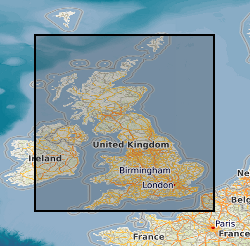
Mining hazard (not including coal) summarises the location, extent and indicates the level of hazard associated with former and present underground mine workings. The dataset covers Great Britain and is published at 1: 50 000 scale. The content is derived from a range of data sources including, but not limited to the bedrock geology, extensive literature reviews of both published and unpublished documents, abandonment and mine plans, combined with a wealth of expert knowledge and experience. The release of version 8 builds on the content of previously published versions. The coverage has been expanded with the inclusion of newly identified areas and drawing on data from the BGS published Britpits (BGS database of British Pits -includes both surface and underground mineral workings) and other resources. For the first time, zones of influence have been integrated (for evaporites, oil shales and building stones) to indicate the areas surrounding mining sites which might be impacted. The data have been compiled and presented in an easy to use format to provide a national overview of the country's mining legacy. Given the long and complex mining history of Great Britain, this dataset represents the best information available at the present time (September 2020). Work continues to develop this product, which will result in the release of ad hoc updates in the future.
-

The 5km Hex GS Shrink Swell dataset shows a generalised view of the GeoSure Shrink Swell v8 dataset to a hexagonal grid resolution of 64.95km coverage area (side length of 5km). This dataset indicates areas of potential ground movement in a helpful and user-friendly format. The rating is based on a highest level of susceptibility identified within that Hex area: Low (1), Moderate (2), Significant (3). Areas of localised significant rating are also indicated. The summarising process via spatial statistics at this scale may lead to under or over estimation of the extent of a hazard. The supporting GeoSure reports can help inform planning decisions and indicate causes of subsidence. The Shrink Swell methodology is based on the BGS Digital Map (DiGMapGB-50) and expert knowledge of the behaviour of the formations so defined. This dataset provides an assessment of the potential for a geological deposit to shrink and swell. Many soils contain clay minerals that absorb water when wet (making them swell), and lose water as they dry (making them shrink). This shrink-swell behaviour is controlled by the type and amount of clay in the soil, and by seasonal changes in the soil moisture content (related to rainfall and local drainage). The rock formations most susceptible to shrink-swell behaviour are found mainly in the south-east of Britain. Clay rocks elsewhere in the country are older and have been hardened by burial deep in the earth and are less able to absorb water. The BGS has carried out detailed geotechnical and mineralogical investigations into rock types known to shrink, and are modelling their properties across the near surface. This research underpins guidance contained in the national GeoSure dataset, and is the basis for our responses to local authorities, companies and members of the public who require specific information on the hazard in their areas. The BGS is undertaking a wide-ranging research programme to investigate this phenomenon by identifying those areas most at risk and developing sustainable management solutions. Complete Great Britain national coverage is available.
-
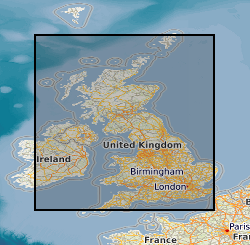
The BGS GeoCoast Dataset is a Geographic Information System (GIS)-based analysis for indicating multi-hazards and interdependencies within the coastal zone of Great Britain (not including Orkney and Shetland). GeoCoast represents the natural geological coastline (around the mainland of Great Britain) as if no coastal defences or made ground are present. This will be of particular value in areas where coastal defences are no longer maintained. GeoCoast will offer anyone with assets, or an interest in the coastline around Great Britain, access to easy-to-use datasets linked to geohazard data. This will allow users to interpret potential interdependencies in terms of erosion, flooding, habitat and other vulnerabilities. These datasets are divided into two data packages: Premium and Open datasets, which include the following information: The data is delivered in GIS ESRI point, polyline and polygon format (other formats available on request).
-
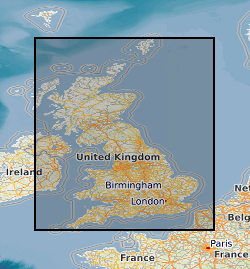
The newGeoSure Insurance Product (newGIP) provides the potential insurance risk due to natural ground movement. It incorporates the combined effects of the 6 GeoSure hazards on (low-rise) buildings: landslides, shrink-swell clays, soluble rocks, running sands, compressible ground, and collapsible deposits. These hazards are evaluated using a series of processes including statistical analyses and expert elicitation techniques to create a derived product that can be used for insurance purposes such as identifying and estimating risk and susceptibility. The evaluated hazards are then linked to a postcode database - the Derived Postcode Database (DPD), which is updated biannually with new releases of Ordnance Survey Code-Point® data (current version used: 2023.1). The newGIP is provided for national coverage across Great Britain (not including the Isle of Man). This product is available in a range of GIS formats including Access (*.dbf), ArcGIS (*.shp) or MapInfo (*.tab) on request. The newGIP is produced for use at 1:50 000 scale providing 50 m ground resolution.
-
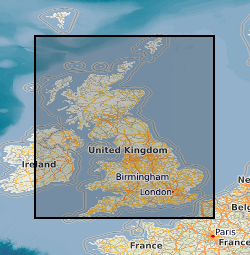
Underground extraction of minerals and rocks has taken place in Great Britain for more than 5000 years. The dataset draws together a range of diverse information; the geology, the primary constraint on distribution; additional information sourced from published literature and knowledge from BGS experts. Areas of known underground mining are identified with an indication of the level of hazard associated for each site. The presence of former underground workings, particularly where shallow, may collapse, causing surface settlement or subsidence. The type of material mined, age and extent of working (where known) is used to assess and classify the hazard at each site. The value is based on an A (mining is not known to have occurred) to E (evidence of extensive underground mining is known) scale. Mining Hazard (not including coal) covers areas of known underground working in Great Britain. The coverage is not comprehensive as areas with no evidence of underground working are not included in the data. The dataset was created to provide a comprehensive overview of Great Britain's long and complicated mining legacy. It provides essential information for planners and developers working in areas where former underground mine workings may have occurred. Also for anyone involved in the ownership or management of property, including developers, householders and local government.
-
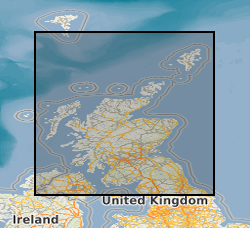
The dataset describes the relative vulnerability of groundwater to contamination across Scotland, by means of five relative classes ranging from 1 (lowest vulnerability) to 5 (highest vulnerability). The dataset is a screening tool that can be used to show the relative threat to groundwater quality from contamination across Scotland. It can provide guidance on the vulnerability of groundwater at a regional scale, highlighting areas at comparatively higher risk of groundwater contamination, and can help indicate the degree of specific site investigation required for a new development or activity. It is designed to be used at a scale of 1:100,000 and should be regarded as a tool to aid groundwater risk assessment rather than a complete solution. Latest version: Groundwater Vulnerability Scotland version 2
-
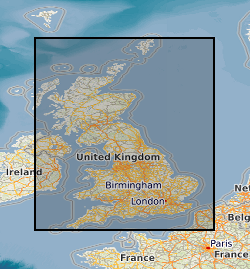
**This dataset has been superseded** The newGeoSure Insurance Product (newGIP) provides the potential insurance risk due to natural ground movement. It incorporates the combined effects of the 6 GeoSure hazards on (low-rise) buildings: landslides, shrink-swell clays, soluble rocks, running sands, compressible ground and collapsible deposits. These hazards are evaluated using a series of processes including statistical analyses and expert elicitation techniques to create a derived product that can be used for insurance purposes such as identifying and estimating risk and susceptibility. The evaluated hazards are then linked to a postcode database - the Derived Postcode Database (DPD), which is updated biannually with new releases of Ordnance Survey Code-Point® data (current version used: 2022.3). The newGIP is provided for national coverage across Great Britain (not including the Isle of Man). This product is available in a range of GIS formats including Access (*.dbf), ArcGIS (*.shp) or MapInfo (*.tab) on request. The newGIP is produced for use at 1:50 000 scale providing 50 m ground resolution.
-

The GeoSure data sets and reports from the British Geological Survey provide information about potential ground movement or subsidence in a helpful and user-friendly format. The reports can help inform planning decisions and indicate causes of subsidence. The methodology is based on BGS DiGMap (Digital Map) and expert knowledge of the behaviour of the formations so defined. This dataset provides an assessment of the potential for dissolution within a geological deposit. Ground dissolution occurs when certain types of rock contain layers of material that may dissolve if they get wet. This can cause underground cavities to develop. These cavities reduce support to the ground above and can lead to a collapse of overlying rocks. Dissolution of soluble rocks produces landforms and features collectively known as 'karst'. Britain has four main types of soluble or 'karstic' rocks; limestone, chalk, gypsum and salt, each with a different character and associated potential hazards. Engineering problems associated with these karstic rocks include subsidence, sinkhole formation, uneven rock-head and reduced rock-mass strength. Sinkhole formation and subsidence has the potential to cause damage to buildings and infrastructure. Complete Great Britain national coverage is available. The storage formats of the data are ESRI and MapInfo but other formats can be supplied.
-
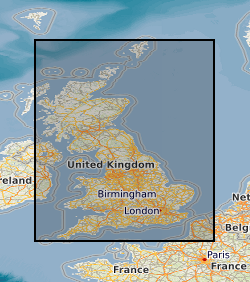
The 5km Hex GS Landslides dataset shows a generalised view of the GeoSure Landslides v8 dataset to a hexagonal grid resolution of 64.95km coverage area (side length of 5km). This dataset indicates areas of potential ground movement in a helpful and user-friendly format. The rating is based on a highest level of susceptibility identified within that Hex area: Low (1), Moderate (2), Significant (3). Areas of localised significant rating are also indicated. The summarising process via spatial statistics at this scale may lead to under or over estimation of the extent of a hazard. The supporting GeoSure reports can help inform planning decisions and indicate causes of subsidence. The methodology is based on the BGS Digital Map (DiGMapGB-50) and expert knowledge of the behaviour of the formations so defined. This dataset provides an assessment of slope instability. Landslide hazard occurs due to particular slope characteristics (such as geology, gradient, sources of water, drainage, man-made constructions) combining to cause the slope to become unstable. Downslope movement of materials, such as a landslide or rockfall may lead to a loss of support and damage to buildings. Complete Great Britain national coverage is available.
-
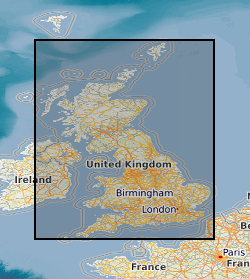
The BGS groundwater levels dataset is a gridded interpolation of depth to groundwater. The dataset is a raster grid, with 50 × 50 metre pixels holding values that represent the probable maximum depth, in metres, to the phreatic water table. This represents the likely lowest water level, under natural conditions, in an open well or borehole drilled into the uppermost parts of a rock unit. The dataset has been modelled from topography and hydrology, assuming that surface water and groundwater are hydraulically connected. It has not used observations of groundwater level in wells or boreholes directly, but they have been used to validate its performance.
 NERC Data Catalogue Service
NERC Data Catalogue Service